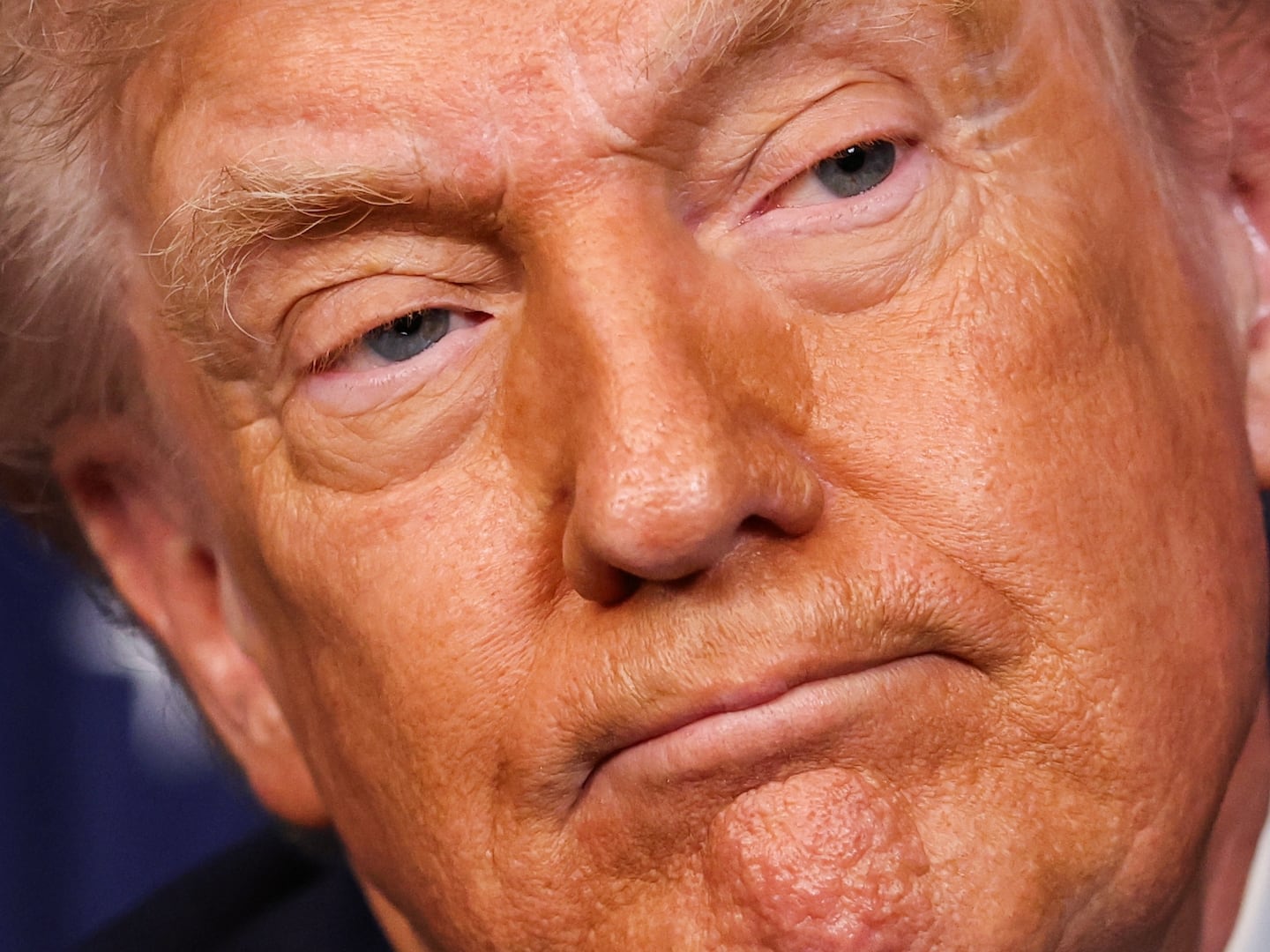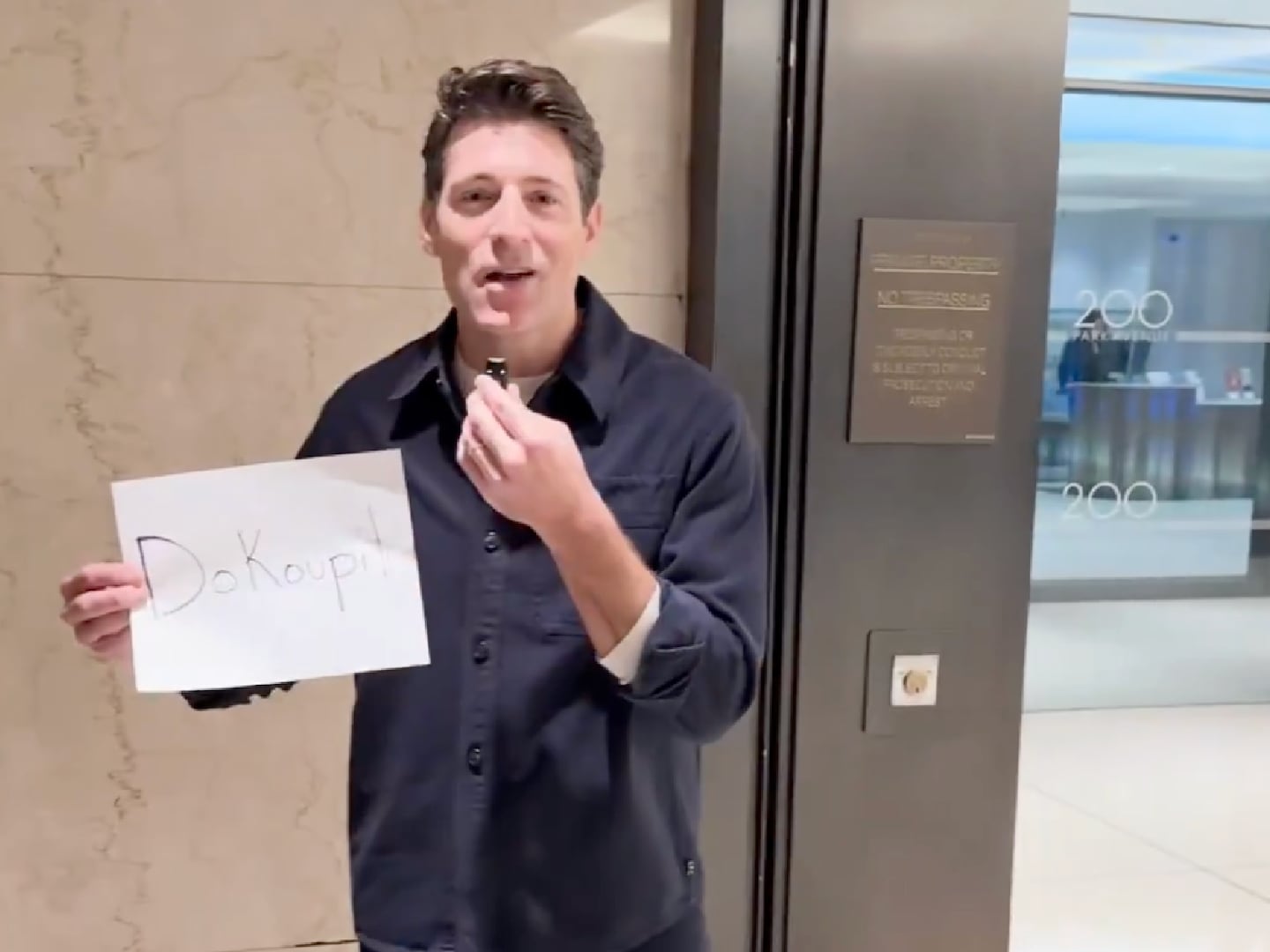Beyond the frankly bananas panoply of wheat-fields, intense hand-holding, ecstatic gamboling in forests and on beaches, and standing against trees lit by shafts of sunlight, there are some important codas to make clear when writing about Kate Middleton’s what-the-hell-was-that cancer recovery video.
First, whatever her critics say, she can tell the world whatever she likes how she likes. It is good that she feels so well after completing chemotherapy treatment. Chemo, as those who know know, can be horrible, tough, and variable—each day an unknown physical and psychological rollercoaster. Every cancer patient is different, and every cancer patient can declare what they want to declare in whatever way suits them.
It is also true that Kate has access to the kind of medical expertise and care many do not. Some have questioned her experience, and expression of that experience, when contrasted with those who do not share her privilege. But, as the video shows, Kate is speaking for herself (and for others, she hopes). She is a public figure, one of the famous women in the world, and as such has decided to make an emphatically public statement—in a way and tone no-one would have predicted. The only thing missing in her pop video meets Instagram postcard were animated tweeting birds and deer appearing in the woodland clearing gazing at her adoringly.
Kate wants the world to know that she is cancer-free, that she hopes to remain so, and to give the people in the world following her story some notion of the “stormy waters” she has charted to date. She also shares a sense that her recovery journey is ongoing—that people should expect to see her a bit but not much; that she has the support of her loved ones; and that she has cool filmmaker friends willing to mash-up Succession, modishly blanched cinefilm and pop videos to deliver that message to the world.
Why did Kate and husband Prince William choose to convey the news this way? The video is far more intriguing in its OTT production and delivery than its welcome message of health and hope.

The video’s intimacy and lush, sensual extravagance is so out of their rather up-to-now staid character (they share two kisses!). Is this public display of friskiness a one-off, or does it mark a sea-change? Amid all the peppy cuteness of the video, is it also—as a friend of theirs told the Daily Beast—a f*** you to their critics, to all those who propagated conspiracy theories about Kate’s whereabouts when mystery surrounded what was wrong with her, to all those who have muttered darkly about the state of their marriage? It’s the closest to a royal OnlyFans we’ve yet gotten.
Here are William and Kate not just being sweet and devoted parents, but also holding on to each other on the forest floor, hand holding, as if waiting for their spot in the next Calvin Klein campaign. For a cancer recovery video, it is defiantly sexy—Kate’s Veronica Beard peasant dress and blue denim shirtdress are on-trend Trad Wife; he may be without his sexy summer beard, but the shirt is perfectly fitted around his slim body (although he does seem a little whaatt-am-I-doing-here in one frame).
Up to now, apart from the odd, sweet look and hand-hold, we haven’t had a sense of Kate and William being hot for each other. And here, in a video intended to tell the world that Kate is OK following cancer treatment, is another message: this marriage is OK too, all you malevolent critics and gossipers. Very OK. We don’t just like each other, we are very into each other. We don’t just cut ribbons at public events, and make nice speeches, and do dutiful good works. We are together together. Got that?
Another thing: the absence of King Charles and the presence of Kate’s parents, Michael and Carole Middleton playing cards with William, Kate, and their kids. For months we have been sold the narrative of Kate and Charles, cancer best buds on their respective critical health journeys. Yet Charles is not seen in the video. Instead, we see—under Kate and William’s behest—an older narrative re-established, of William feeling the comfort of hearth and home of his in-laws, who have clearly been a bedrock of support, particularly with their children, as Kate has undergone her treatment.

One of the earliest memes to appear after the video set it to the theme music of Succession; and not only is this funny—it’s a perfect match in both mood and vibe—but it also captures the video’s oddly intense sense of purpose. It is so desperate to capture the Waleses at play, the Waleses strong, the Waleses unified and at ease in the bucolic surrounds of their Norfolk home—and to do this in easy-breezy pastel and sepia shades—that its seriousness, its serious intent, to sell Kate and William anew as a couple and as parents and family unit becomes starkly apparent. The video is premium royal merchandising—how cynically executed depends on the observer.
Kate and William are adults, and so are their advisers, and this is how they have chosen to convey their message. Think for a moment of how this message could have been delivered, according to traditional royal dictates. A simple statement sent to the Press Association. Maybe a nice new family picture. A new video of Kate, with or without family, sitting on a bench, as a companion piece to the video in which she announced her cancer diagnosis.
This video is deliberately, absolutely not that. In its vivid, over-the-top repudiation of what we expect from Kate and William, and the royals more generally, it heralds a sea-change in how this couple wants to sell itself to the public. In this sense, what is striking in its tone and execution is how much it owes to the loosening of stuffy strictures and savvy marketing attributed to their nemeses, the Sussexes, Prince Harry and Meghan Markle.
Imagine for a moment if the latter had released such a video—and the gale of criticism and snark and sneering that would have rained down on them for doing so. And there has been online criticism of Kate and William—much from cancer sufferers and their loved ones questioning Kate’s delirious Hallmark-imagery set against many others’ experiences of the disease, and why Kate couldn’t have linked to charities, or reached out to the wider cancer community beyond her admirable if vague statements of strength and endurance.

But generally, the reaction to the Kate and William video has been positive, if a little stunned at seeing this previously square couple suddenly throwing off the shackles of dullness so visibly and publicly. However, without Harry and Meghan’s leading the way with their Oprah confessional, all the dish of Harry’s memoir, and the general, emotional openness the pair have propagated, would we be seeing Kate talking about her feelings so openly while running through wheat, and blissing out in celestial sunbeams?
Far from an acknowledgment of the debt to the Sussexes, William is still daggers-drawn with Harry, and—when the promo for the Sussexes’ latest Netflix project dropped hours later on Monday—the media was back to howling at them for daring to sell something so soon after Kate and William put out their video.
This was especially ironic, as Harry and Meghan are, whatever you think about them, honest that they are selling themselves. They want you to watch them, and buy their product. If you do, if you like them, fine; if not, fine. The Kate cancer video is also a selling tool—but couched and centered in the recovery from trauma. It may have a nobler frame, but it is still an advertisement.
One could claim it is far more cynical than Harry and Meghan’s because it is rooted in the suffering and recovery of something so serious it seeks to neutralize any cynicism, or even sober analysis, on impact.
Kate and William are selling themselves just as ruthlessly and calculatedly as Harry and Meghan do; the difference is, Harry and Meghan are standing at the cash register, ready to take your money (or not), while Kate and William are standing to the side, nervously thanking you for coming to the store, ready to direct you to the cash register, if you, like, want.
This selling of royalty is not new. Queen Elizabeth II did it. Prince Charles and Princess Diana did it. They all do it with their ceremonies and rituals and palaces. The mode of that selling has shifted over the years, but the intent is still the same—this family wants the British public to continue to fund its existence, and for the rest of the world to buy into its mystique and tabloid intrigues and insane soap operas enough to keep shelling out tourist dollars to come see its palaces, and—in the territories where this still holds sway—to retain Charles, and William, and whoever comes next as their heads of state.

William, in particular, knows this is untenable; that not only deference to the institution but also the point of royalty is in question. This video is a telling piece of messaging, revealing how he and Kate are trying to navigate a route through to modernity while retaining the mystique that Queen Elizabeth saw as vital to the maintenance of the institution.
The video may have modern dressing, but in spirit and intent it is no different to the stiff royal portraits of old which emphasized like the video the eternally entwined royal themes of family, family, family, and the maintenance of the institution. Don’t be fooled by the Insta-dressing; this is the royals selling themselves as they have always done.
Kate and William, like their royal and celebrity compadres, want to circumvent the intrusion of the tabloids by artfully intruding on themselves—and hope this is enough to sate curiosity. The struggle for the living generations of royals is one shared by all famous and very rich people, who seek to market themselves while hoping to keep prying eyes away from whatever is happening behind closed doors.
This battle around mystique and openness was already evident in 1969, when the royals let the cameras in for the landmark documentary Royal Family. There is a reason why that documentary was hidden away for so long.
As someone who has watched it, it is obvious why the queen wanted it locked away in the nearest vault. There was, for her, far too much sunlight, far too much everyday reality peaking through the gilded clouds in every frame. The Crown likely did not upset the royals because it trashed or misrepresented them; it caused consternation because it imagined and took them both seriously and mischievously. It read them fully. Way too much sunlight.
The cancer video is a contrasting pivot point of self-exposure; Kate and William have rarely been seen as so intimate, so public in their feelings, so open in their feelings, so out there. On first watching, it seems surreal—less moving cancer recovery video, and more get-a-room-guys.
Kate and William hope their woodland revels, and their very active and savvy social media presence generally, supplies all you will want to see; that they won’t, maybe will never have to, discuss what kind of cancer Kate has, what her treatments were, what the state of their marriage was, timelines, specifics, details. They hope her words, and the lovely images, and the cute family games, are all enough. Harry and Meghan also hope their words and images speak for themselves. King Charles hopes you see someone who also is fighting a horrible disease, who again doesn’t want to discuss its specifics, who is still very much around.

All of these royals invade their own privacy to sell themselves to us—like any celebrity with social media accounts; like anyone, famous or not, doing the same. They also have a simultaneous fierce regard for when that privacy is, in their eyes, invaded. Kate’s cancer video, then, is moving, heartening, and good news. But it is also an act of curation, a shop window, a self-shattering of some mystique—but hopefully, for her and William, not too much mystique. The royals hope to feed the beast enough that the beast never bares its fangs; yet the royals know that the beast always bears its fangs... yet still the royals hope to feed and cajole it—a hopeless, consistently vicious circle.
Kate’s cancer video implicitly acknowledges this impossible royal balancing act, and futile negotiation with inquisitive forces out of their control. It is not a new dilemma. With an ever-more ravenous media and public, Kate and William’s latest attempt to strike back at their haters, critics, and conspiracy theorists with an intensely rendered video is as audacious as it is confronting and risky. But maybe they and their advisers’ thinking extends to: throw it all at the wall, what do they have to lose?
Queen Elizabeth knew how much sunlight to let in. She died, despite being in front of our eyes for so many years, still a figure of intrigue, an old-school regal mystery. Kate, William, Charles, Harry, and Meghan have said and done so much more—from adultery confessions, to family conflicts, to fights and broken dog bowls, to, now, a strangely sexy woodland cancer recovery video that only needs Kate Bush singing “Wuthering Heights” to send it fully over the edge.
As she stands in the sunlight against the tree in her bonkers video, Kate looks to be drinking it in, peaceably happy to be alive. Good for her, and for her loved ones. She and her family will also hope that same exposing light remains soft and benevolent on the eyes, and always somehow under their control.








